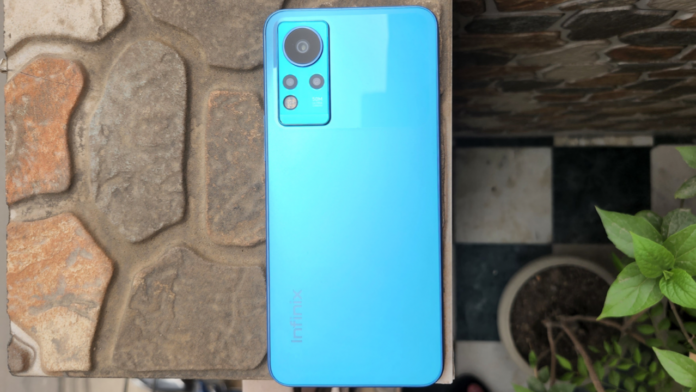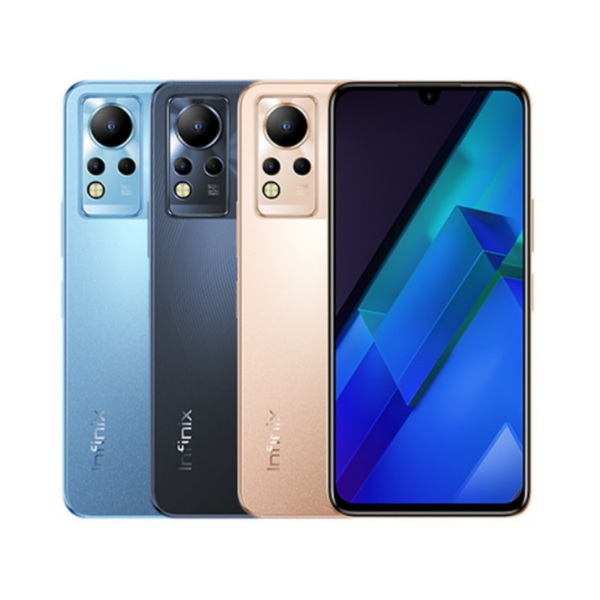Infinix Note series has been regularly followed up by the company in India with new launches every few months. The newest launch brings us the successor to the Note 11, and is called the Infinix Note 12. It is the latest budget offering from the company with a starting price tag of Rs 11,999. While a host of other options are available in this price range, can you pick the Infinix Note 12 over others is the question we will try to answer in our review of the device.
Infinix Note 12: Design
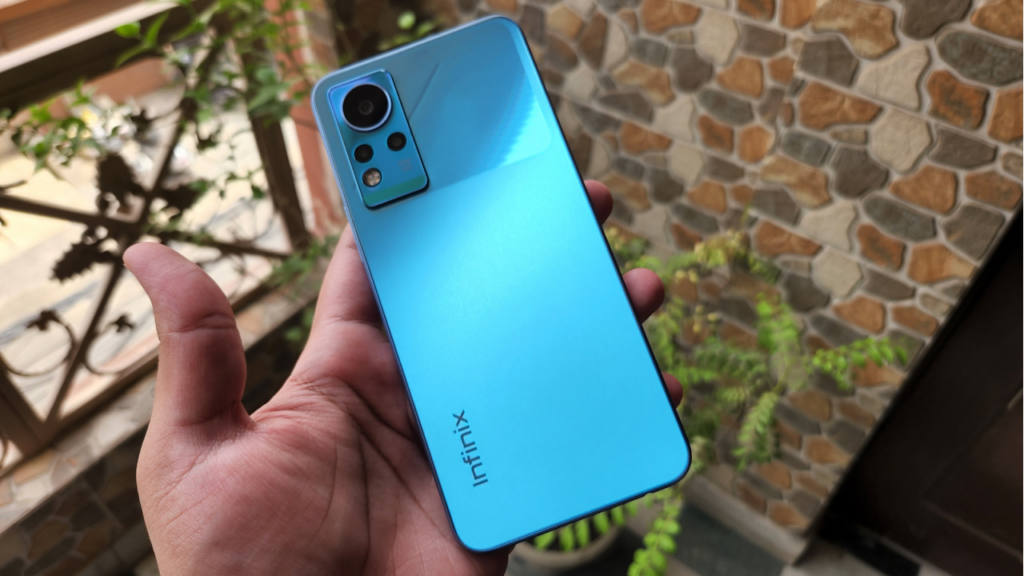
The Infinix Note 12 adopts a dual tone design but with a plastic finish all around. The blue colour we got has a matte finish at the bottom while the top has a glossy finish. As expected, it doesn’t feel very premium but at this price, it’s fine. The buttons have tactile feedback and the device is light to hold.
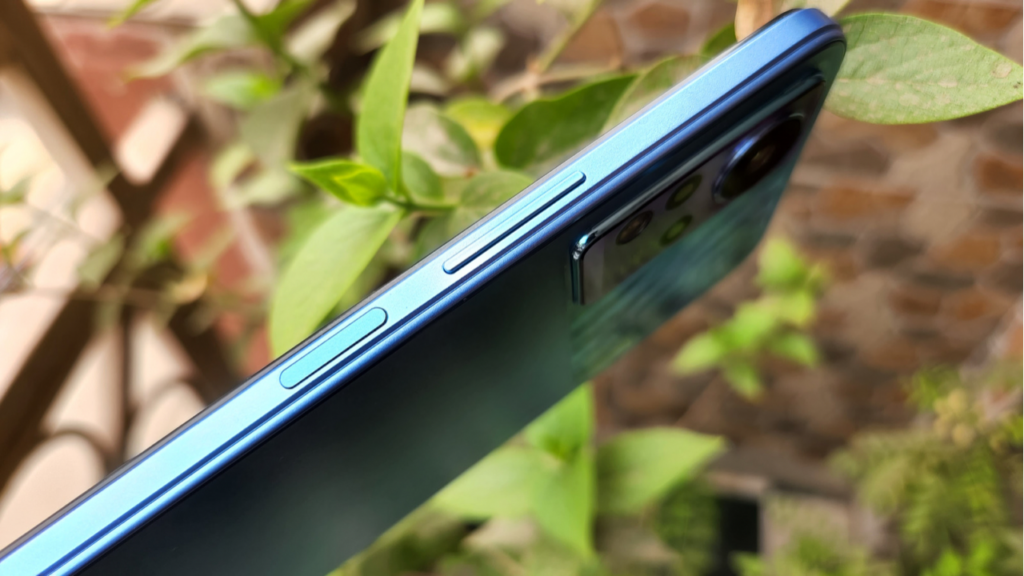
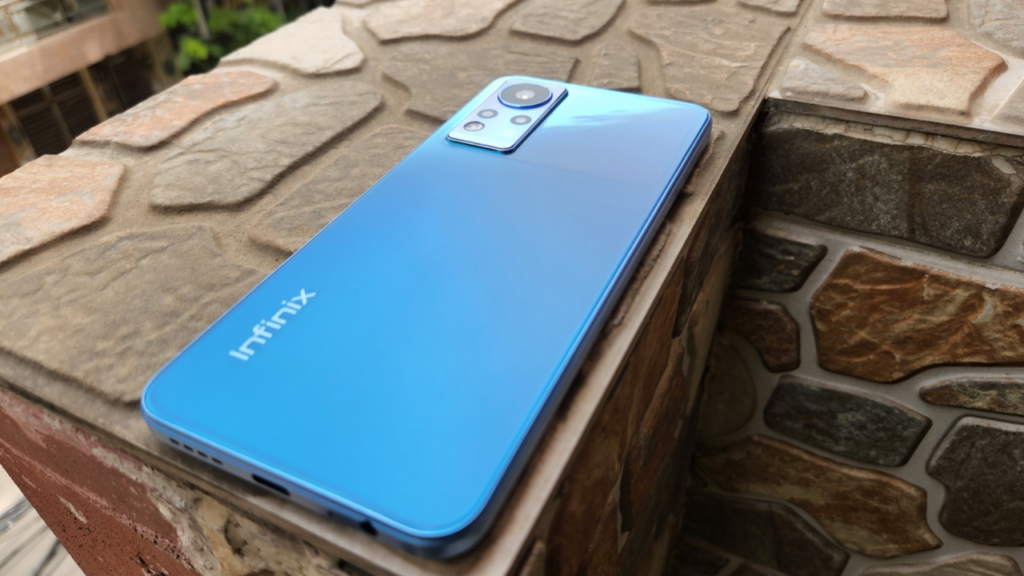
As it has flat sides, the grip is tight enough as well. The power button on the right also doubles as a fingerprint sensor which is quite fast in unlocking the device. At the bottom, you get a 3.5mm Headphone jack, USB-C port, mic and a speaker grille. There’s a second speaker at the dop which is also the earpiece and this stereo speaker setup sounds okay. At high volume, the lyrics get supressed at times but they do get adequately loud.

Infinix has partnered with Marvel to provide a Doctor Strange: Multiverse of Madness themed protective case which is made of rubber material. It is thick enough to protect the smartphone from drops. Furthermore, it has doctor strange printed at the rear which actually doesn’t look like Doctor Strange because of low quality print. It also has Marvel and Infinix branding. Inside the box, along with a transparent TPU case, 33W charging brick and a USB-C cable, you also get two Doctor Strange inspired stickers as well.
Infinix Note 12: Display
As for the front, the device gets a 6.7” FHD+ AMOLED Display with 1000 nits of peak brightness, 108% NTSC Ratio and 100% DCI P3 colour gamut. It comes with a Drop notch screen, 92% screen-to-body ratio and 180 Hz touch sampling rate. The specs of the display look impressive and also feels the same while using it for the most part.
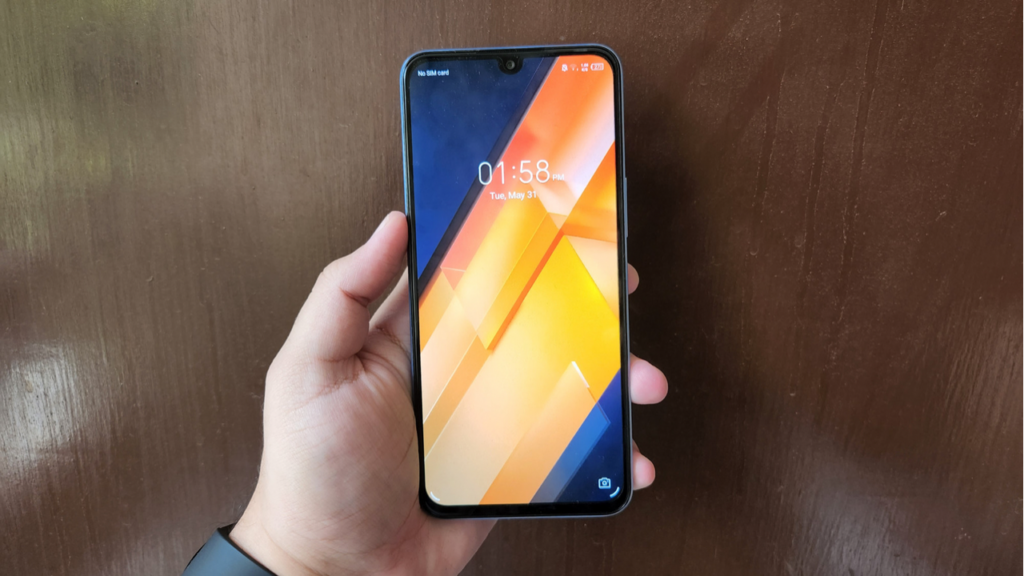
The panel gets bright enough indoors but not so much under direct sunlight. Viewing angles have a rainbow effect when viewing from the top or bottom. However, the colours look vibrant and the text and images look sharp. The bezels are not very obstructive either. While it doesn’t support a high refresh rate, the high touch sampling rate does help while playing games.
Infinix Note 12: Software & Performance
The Infinix Note 12 Review unit we got had 6GB RAM and 128GB storage. It also supports 3GB Virtual RAM expansion and draws power from a MediaTek Helio G88 processor. While this internals looks ample to power a budget smartphone, it doesn’t quite convert into practical usage and I would blame it on the software.
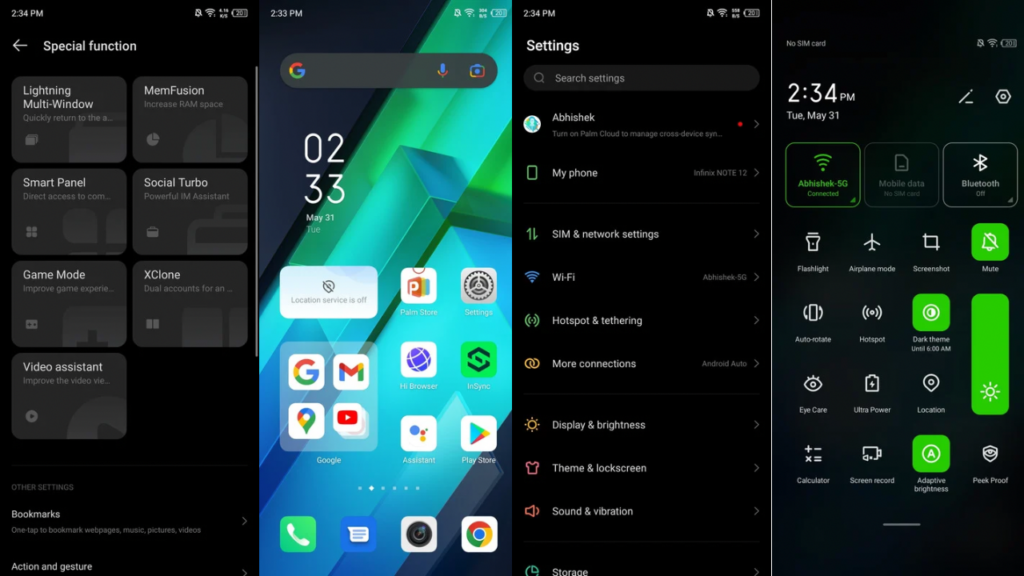
The Note 12 runs on XOS 10.0 based on Android 11. This skin of Android is not very polished and stutters in daily use, let alone the fact that it isn’t based on Android 12 yet. While some animations were smooth, some lagged and the device often didn’t register my touch resulting in multiple taps to execute the task I wanted to. In addition, there’s a lot of bloatware in the software out of which some apps such as MX TakaTak can be uninstalled while Infinix’s own apps can only be disabled. The overall performance and software experience in my opinion was straightaway disappointing.
The Helio G88 is a capable Processor to power budget smartphones and I could see that when I was playing games such as RL sideswipe which ran very smooth at medium graphics and at a constant 60 fps. However, the software seems to be pulling down the overall performance because of its inefficiency, restricting it from reaching its full potential. On a positive note, you do get a plethora of features including a Smart panel, an Always-on display with multiple clock styles, social turbo, Game mode, Gestures, Peek Proof, and more. The RAM Management was handled well and it was pre-loaded with the April security patch.
Read More: Infinix Note 12 series launched in India, price starts at Rs 11999
Infinix Note 12: Battery Life
Coming to battery life, the Infinix Note 12 is backed by a 5000mAh battery with support for 33W fast charging. This battery can easily run beyond a day of light usage. During my review period of the Infinix Note 12, I was able to get a runtime of 1.5 days with more than 6.5 hours of screen-on time which is very impressive. Apart from that, with heavy usage, it will last you a day at maximum. The device took around 1.5 hours to charge from 20% to 100%.
Infinix Note 12: Cameras
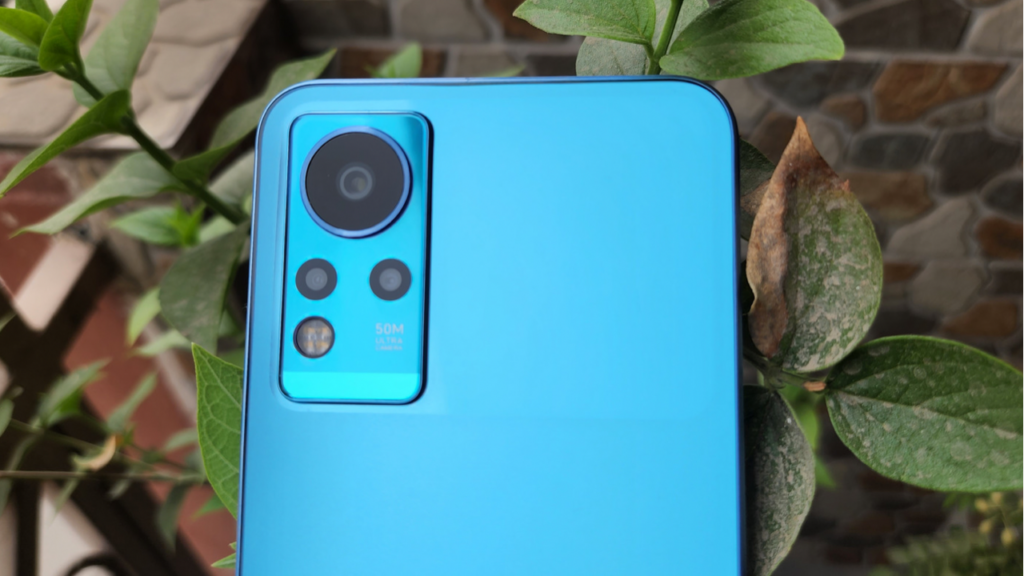
The Infinix Note 12 gets a triple camera setup at the back including a 50MP primary sensor, 2MP depth sensor and an AI lens. This primary camera can click sharp photos when given enough light with natural colour scale. The detailing in the photo was also decent.

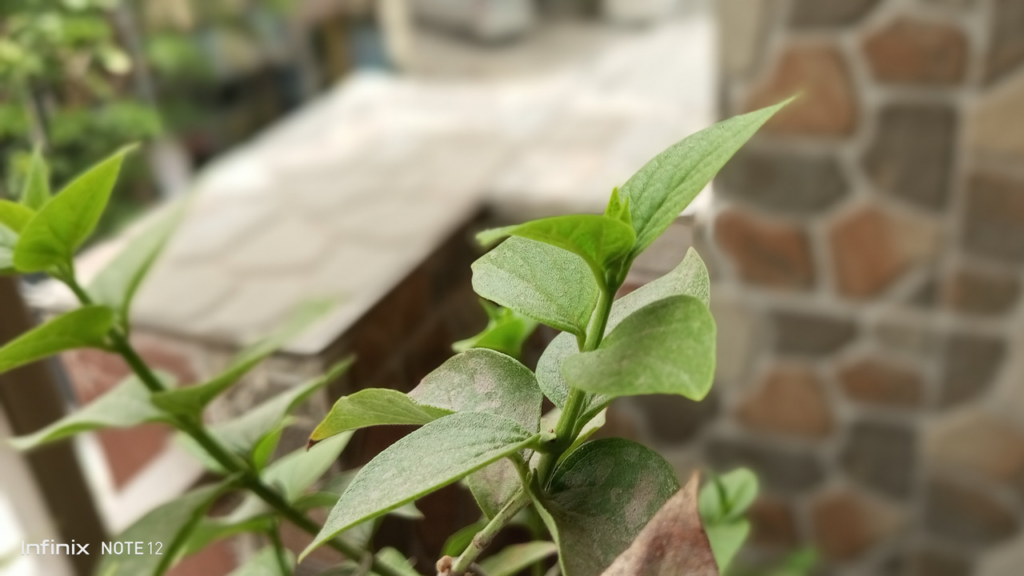
As for portraits, the depth sensor does a decent job with the bokeh effect, however, the EDGE detection still needs improvement. The details and colours in the photo were well handled. With a human subject though, the skin tone can look faded at times. With other objects, the colours have been kept vibrant.
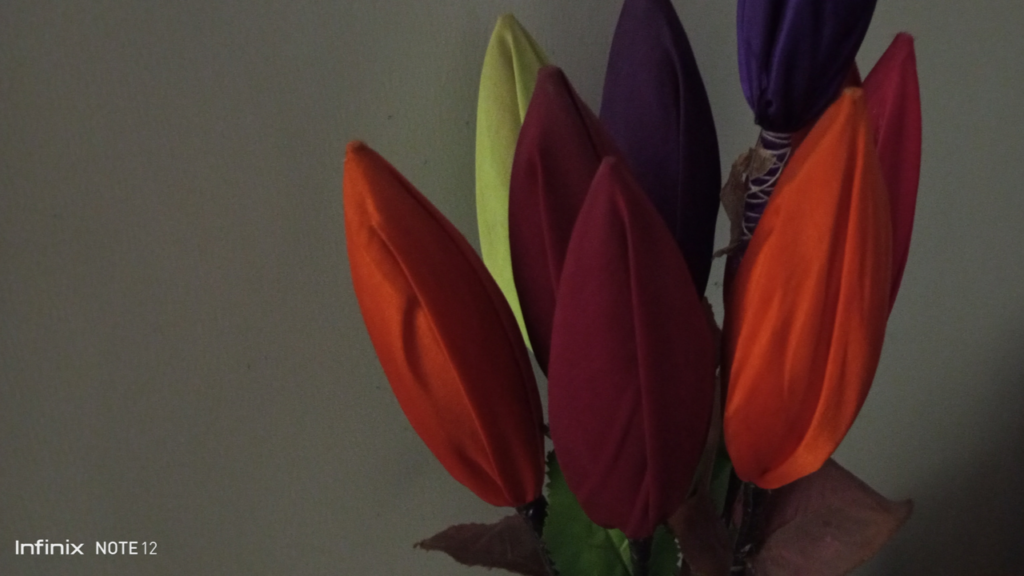
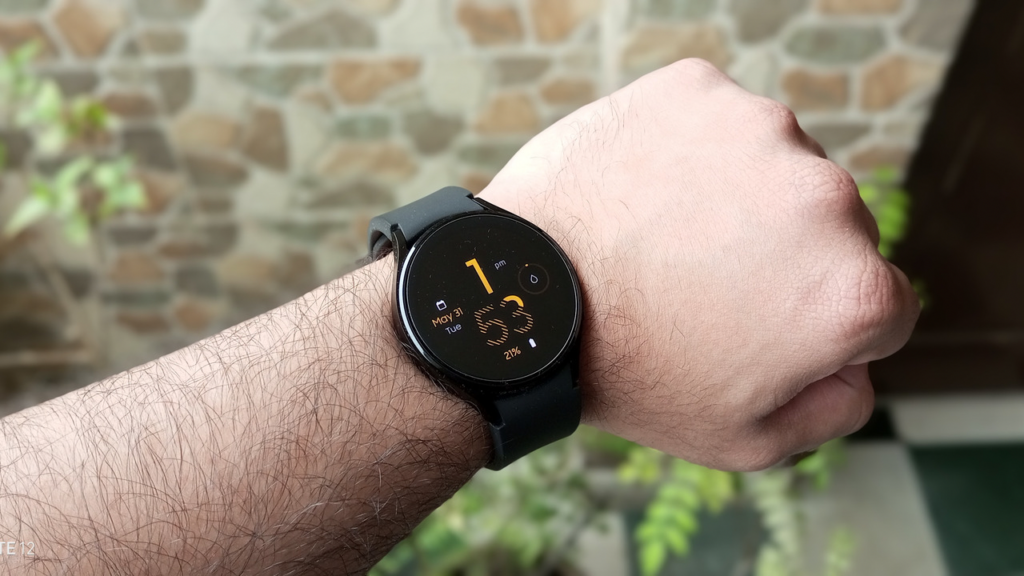
Under low lighting conditions, the device clicked average shots and I had expected the same. You cannot expect a lot of details when there’s not enough light. Under indoor lighting though, the shots came out good with above average detailing and sharpness and vivid colours.


Selfies look fine in terms of sharpness but the colours look way off from the natural tone of the scene. The photos have a cool skin tone which makes shots blue-ish but the skin colour becomes warm and slightly darker resulting in an odd-looking photo with respect to colours. Lastly, night shots look average as well, both with Night mode ON and OFF. Switching on the night mode doesn’t make a big difference but slightly brightens the photo with not so good details.
Infinix Note 12: Competitors
The Infinix Note 12 had to overcome the dominant players in the sub-Rs 15,000 segment including the Realme C35, Realme Narzo 50, and the Redmi Note 11. However, it feels like despite having a capable processor, the Infinix Note 12 falls short in front of these devices.
The Redmi Note 11, which is priced at Rs 13,499 for the base model has a 90Hz AMOLED panel and not a 60Hz panel such as on the Note 12. Furthermore, it has a quad camera system including an ultra-wide angle sensor which is missing on the Note 12. Moreover, MIUI is certainly more polished than XOS, providing a smoother and more stable experience.
In addition, benchmarks show that Snapdragon 680 is slightly more powerful than Helio G88. The Narzo 50 on the other hand also has a MediaTek processor but its a more capable chip, i.e. the Helio G96. It also has a 120Hz LCD panel and the same battery capacity with identical charging speeds as Note 12. Lastly, Realme UI is also more efficient than XOS.


